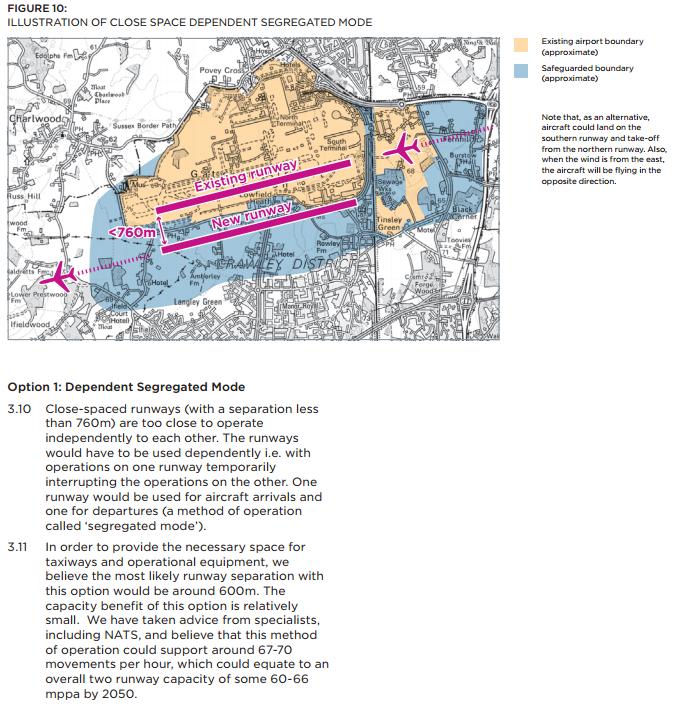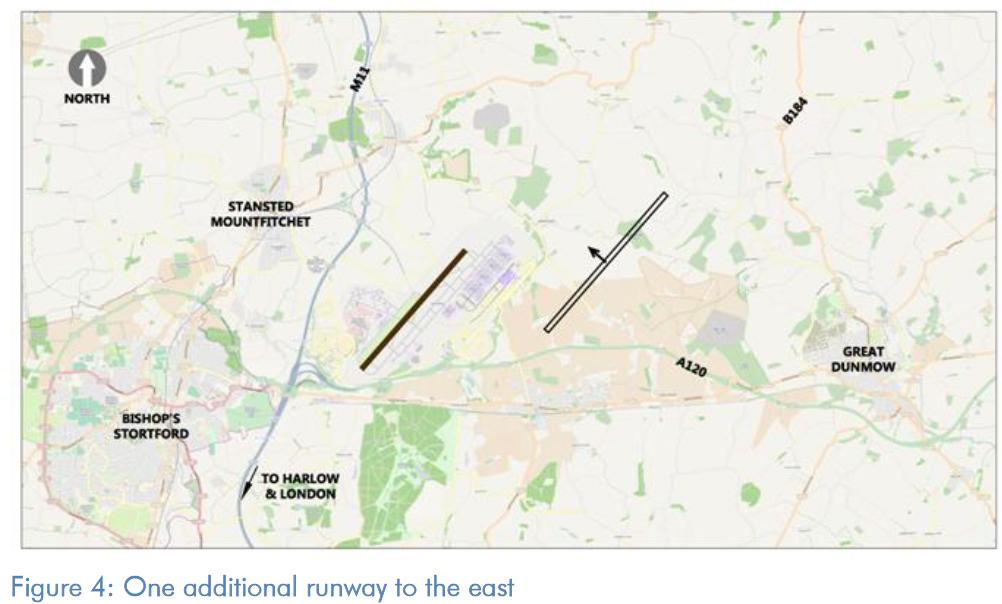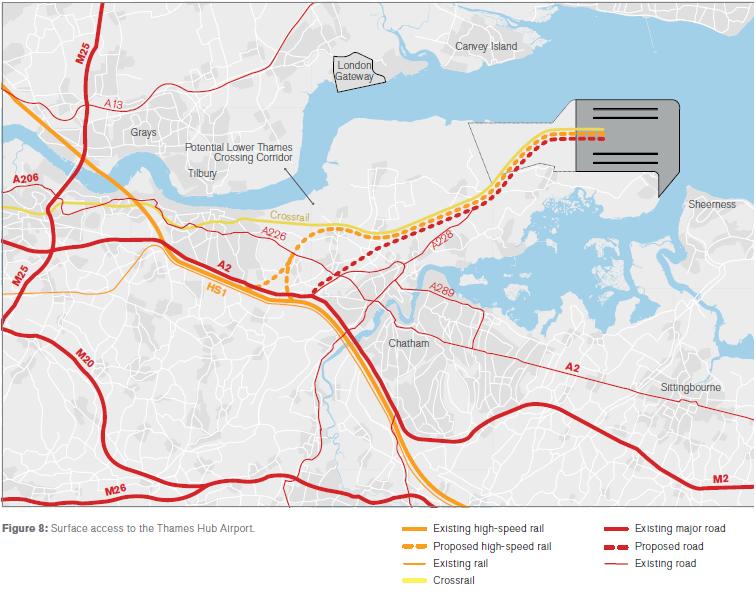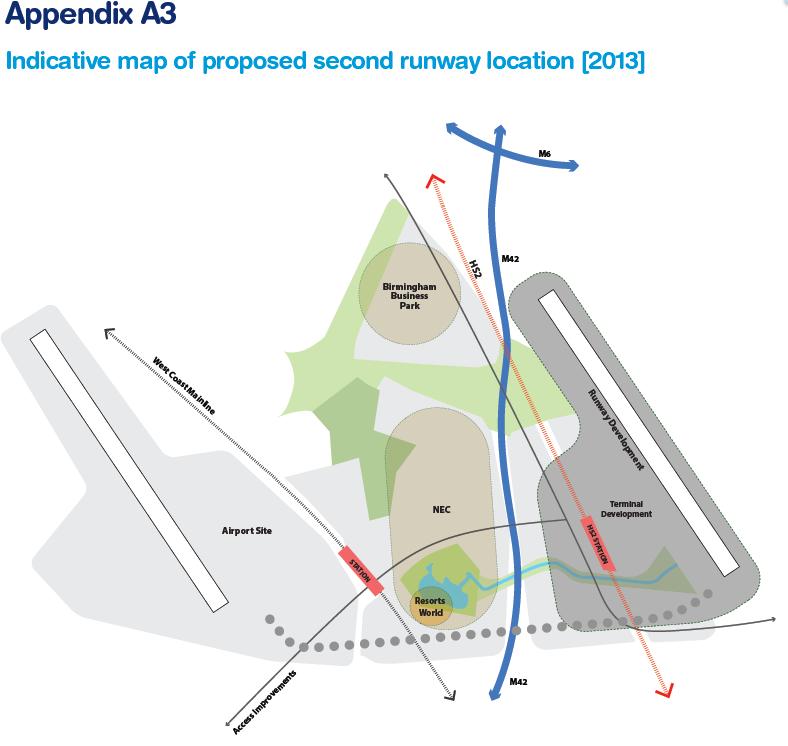Proposals to Airports Commission of airport or runway plans – that have been publicised (+ maps)
The 19th July was the deadline for submissions to the Airports Commission of proposals for plans for new airport capacity. The Commission has said these will all be published on its website in August or September. So far only those publicised by their proponents are publicly available. We have put together a list of those of which we are aware. The main sites for planned new airport capacity are Heathrow, Gatwick, Stansted, Thames Estuary and Birmingham – though there will be others, perhaps in the west country? The Commission asked for no more than 40 pages, and for a specific list of criteria to be taken into account in submissions, including noise, air quality, and climate including “overall compatibility of growth in air travel with the national and global climate change targets” and “the relative climate change impacts of different options for providing additional capacity.” Proposals did not need to be made by the airport owner, but could be made by other interested parties. In December the Commission will publish their list “of the most plausible options for delivering any additional capacity required in the longer term.” We give indicative maps showing possible locations of new runways.
.
Tweet
1. Heathrow
The Heathrow press release is at http://mediacentre.heathrowairport.com/Press-releases/Heathrow-unveils-a-new-approach-to-third-runway-5e2.aspx
The Heathrow proposal document is “A New Approach”
Images of Heathrow’s 3 proposals:
Heathrow’s south west runway option (Stanwell Moor)
Heathrow’s north west runway option
Heathrow northern runway option
2. Gatwick
The Gatwick airport webpage about their proposals is at http://www.gatwickairport.com/bettersolution/
The Gatwick airport proposal is at “Proposals for providing Additional Runway Capacity in the Longer Term”
Images of Gatwick’s 3 proposals
1. This is the close spaced option for the 2nd runway, some 600 – 700 metres south of the existing runway. “Dependent Segregated Mode”
.
2. This is the medium spaced option for the 2nd runway, some over 750 metres, but under 1,000 metres or so , south of the existing runway. “Independent Segregated Mode”
.
3. This is the wide spaced option for the 2nd runway, over 1,035 metres south of the existing runway. ”Independent Mixed Mode”
.
3. Stansted
Stansted Airport’s website about their proposals is at http://www.magworld.co.uk/magweb.nsf/Content/AirportsCommissionSubmissions
The Stansted Airport proposal is at
Stansted’s submission to Airports Commission (pdf 72 pages)
Images of 2 possible runway locations – or another 3 runways
4. Thames Estuary, Isle of Grain “Thames Hub”
Press release at http://www.fosterandpartners.com/news/foster-+-partners-submits-thames-hub-proposal-to-airports-commission/
Report at http://www.fosterandpartners.com/ThamesHub/
Images of the Thames hub proposal
Thames hub surface access proposal
5. Birmingham
The Birmingham proposal is at
” Proposals for providing additional airport capacity in the longer term”
Image of 2nd runway proposal
nd runway
The proposed location for the expanded Airport would be located in a predominantly rural area to the east of the M42, with a second runway forming the eastern boundary of the site.
.
.
6. Severnside
An airport in the Severn Estuary, between Chepshow and Newport.
\More details at https://www.airportwatch.org.uk/?p=17177
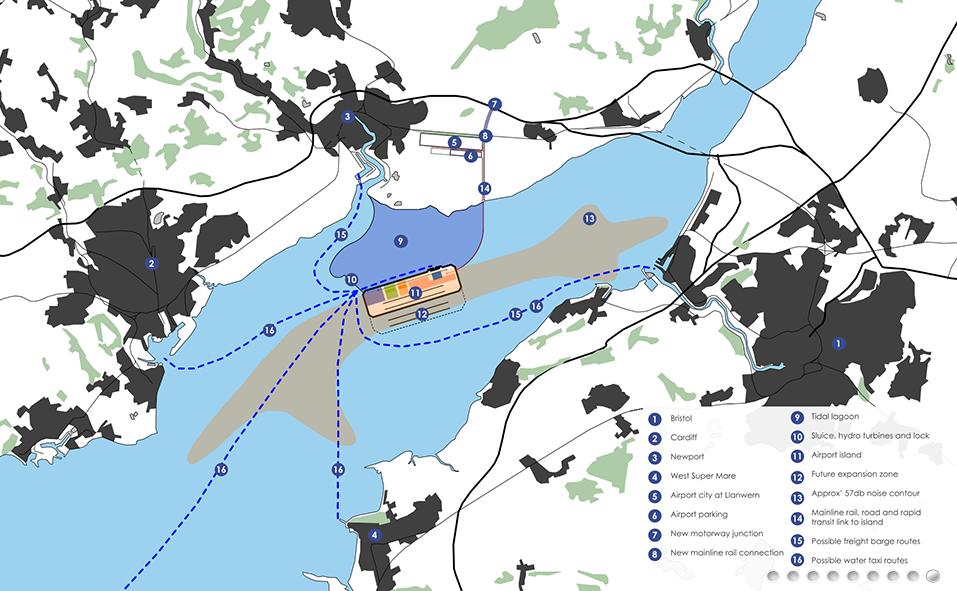
and
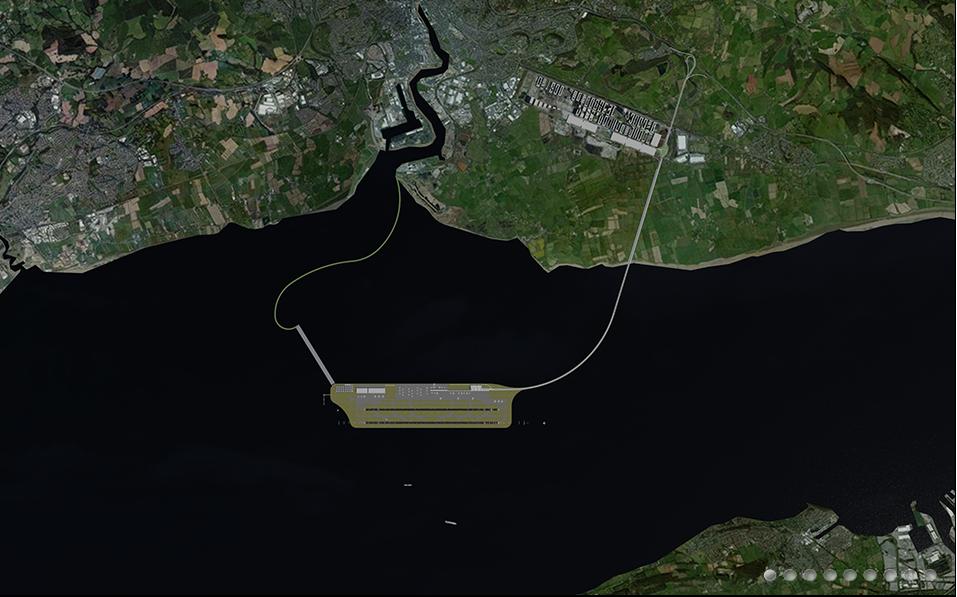
.
There is a bit more information on each submission in the following articles:
1. Heathrow
HACAN will fight tooth and nail against Heathrow’s plans for a 3rd runway
July 17, 2013 HACAN, representing residents under the Heathrow flight paths, has vowed to ‘fight tooth and nail’ against the proposals for a 3rd runway released by Heathrow Airport. HACAN welcomed the measures announced by Heathrow to cut noise but argued that these will be negated by the huge increase there will be in the number of planes using the airport if a 3rd runway is given the go-ahead. Heathrow has confirmed that flight numbers will rise by nearly 250,000 a year to a total of 740,000 (from the current 480,000) if a new runway is built. Heathrow’s 3 options are for: (1). A south west option which requires demolition of the 850 properties in the Stanwell Moor area. (2). A north west option in the Harmondsworth Moor area involving demolition of 950 properties. (3). A northern option, very similar to the previous plans for a 3rd runway, involving demolition of Sipson and parts of Harlington. Heathrow has ruled out a 4th runway until at least 2040 as it is not convinced there will be the demand. But it has said that, if a 4th runway was required, one of the options for a 3rd runway would be used. A fourth runway would result in a total of around a million flights per year using the airport. https://www.airportwatch.org.uk/?p=2042
2. Gatwick
Gatwick publishes its 3 options for a southern 2nd runway enabling up to 87 mppa. Strongly opposed by GACC
July 23, 2013 Gatwick Airport has announced its preferred location for a 2nd runway and submitted its plans to the Airports Commission. There are 3 slightly different plans, all for a runway to the south of the existing runway – close, medium or wide spaced. The close runway could not work independently of the existing runway, while the others (at least 750 metres south) could. With the wide spaced runway, over 1,035 metres south, Gatwick could have 95 movements per hour, enabling it to have some 87 million passengers per year (compared to 66 mppa for the close option, and 82 mppa for the medium). Gatwick has managed to get support from the local business lobbies in the area for its plans, and some local council support. Gatwick’s CEO, Stewart Wingate said a 2nd Gatwick runway would cost between £5bn and £9bn and could be open by 2025. Gatwick is selling its plans to the Airports Commission on how many fewer people would be affected by noise than at Heathrow, and that it would be cheaper than some other options. Gatwick wants London to have a “constellation” system, with 3 airports each with two runways, at Heathrow, Gatwick and Stansted. https://www.airportwatch.org.uk/?p=16794
3. Stansted
Owners of Stansted, MAG, submit their plans for a 2nd runway – or to become a 4-runway hub. Stop Stansted Expansion say the proposals are opportunistic, irresponsible and pointless
July 19, 2013 MAG, the owner of Stansted, are submitting their proposals for a 2nd runway to the Airports Commission. They also believe it has the potential to become a UK future 4 runway hub airport. MAG argues that the airport offers the cheapest and least environmentally damaging location (quite how it could do that, on a countryside location is unclear) for a 4-runway airport and estimate that it would cost £10 billion, although no detailed plans have been drawn up. Local campaign group, Stop Stansted Expansion, said that the MAG proposals were reheating plans put forward back in 2002 that were withdrawn by BAA, the former owners, in 2010. SSE’s chairman said: “We really shouldn’t have to go through this whole argument again just three years after the last threat was lifted. We are profoundly disappointed that MAG has behaved in this opportunistic and irresponsible way. With the airport currently operating at only half its permitted capacity a 2nd runway – never mind a 4-runway hub double the size of Heathrow today – is completely unnecessary on business grounds and it would be completely unacceptable on environmental grounds.” MAG has to admit that it could serve almost double the current number of passengers, without any more infrastructure for some years https://www.airportwatch.org.uk/?p=2254
4. Thames Hub
Foster & Partners submit their Isle of Grain airport scheme and Boris courts Chinese and South Korean backers
July 21, 2013 Sky News says advisers to Boris have held initial talks with wealthy foreign institutions including China Investment Corporation (CIC) and officials in South Korea about the Isle of Grain, Thames Estuary hub airport project. Boris now prefers the Isle of Grain as the location site for an airport, rather than “Boris island”. Other institutional investors including City-based pension funds and infrastructure firms are also understood to have told the Mayor’s advisers that they would consider putting long-term capital into the Isle of Grain scheme, which has been called the Thames Hub Airport. Boris is understood to be determined to identify as much private sector funding as possible for a new airport, whereas his principal aviation adviser, Daniel Moylan, is said to be keener on the idea of government financing. On 19th Foster & Partners submitted the Isle of Grain airport scheme to the Airports Commission. Chinese backers are being courted for a number of new UK projects, including a new ‘super-sewer’ under London. https://www.airportwatch.org.uk/?p=2165
5. Birmingham
Birmingham Airport publishes proposals for its future growth – including 2nd runway – to the Airports Commission
July 26, 2013 Birmingham Airport has made a submission to the Airports Commission on its future growth plans. It hopes to grow from 9m passengers a year now to 70m, (the size of Heathrow currently) while allegedly reducing the number of people affected by night noise. They are aware that the Commission is looking at the number affected by noise in the proposals submitted. Birmingham airport says its current runway extension will allow it to handle 27m passengers a year and it has the potential for a 2nd runway to be built some time after 2030 – if the demand required it – costing under £7 billion. The airport estimates that by using the new runway for night flights, it would remove over 13,000 people from the 57dB night noise contour. Birmingham airport say they have support from a large number of businesses in the area, and are well placed for business travellers who are keen to avoid Heathrow and get direct flights to Birmingham. “We have recommended to the commission a network of great long-haul airports to serve Britain’s great cities. Our proposals show that Birmingham Airport is in a position to sit at the heart of this network, serving a valuable catchment area and relieving pressure on congested airports in the South East.” https://www.airportwatch.org.uk/?p=3917
.
.
Details of how proposers of new capacity should submit their plans were given in the Airports Commission paper :
“Guidance document 01: submitting evidence and proposals to the Airports Commission”
How the Airports Commission will take forward its programme of work. (25 pages)
with details of what needs to be included in its section 3 “Proposals for providing additional airport capacity in the longer term”
The Commission stated (page 15) :
” 3.7 Following the submission of expressions of intent in February, the next deadline for submissions will be 19 July 2013. By this date, we will need to receive outline proposals. These should give an overview of the level of additional capacity that would be provided, along with some of the key economic, social and environmental considerations. As stated above, we do not require detailed design and assessment materials at this stage; we are envisaging submissions of no longer than 40 pages. They may not need to include detailed designs for new runways and terminals, though in some cases those bringing proposals may wish to include them where they are fundamental to other areas of their analysis.
3.8 Those bringing proposals may wish to link them to forecast future aviation growth. We intend to look in detail at forecasts for future growth in demand for air transport and will be publishing a paper for consideration on forecasting. At present, however, parties making submissions may wish to refer to the Department for Transport’s existing high, medium and low demand forecasts.
3.9 We are particularly interested in proposals which bring an integrated approach to the issue, taking into account a broad range of factors, including possible problems raised by the proposal and means of resolving or mitigating them. Those preparing proposals may wish to consider whether they could draw upon expert advice from outside their own organisation. We are also interested in receiving proposals that might have implications for more than one site, which might involve growth at a number of airports, or enhanced surface transport links between them.”
and
For the time being, we have identified six broad categories of factors which we would encourage scheme promoters to consider in developing their proposals:
● economic factors;
● social factors;
● climate change impacts;
● local environmental factors;
● accessibility;
● feasibility considerations.
– (and there is more detail within those, including noise, air quality, climate etc). Details
Also (page 23):
4.2 In December 2013, we will publish our interim report, which will include our recommendations on options for the short and medium terms and will include our list of the most plausible options for delivering any additional capacity required in the longer term.
4.3 Following this, we intend to work with the sponsors of credible proposals to carry out further work on developing and assessing them. Where a proposal deemed to be credible does not have a sponsor, the Commission will itself initiate work to develop it further.
4.4 We have not yet finalised the programme of work that will lead to our final report. However, it is likely that each of the listed proposals will be developed into a draft proposal (which will include draft impact assessments) by the summer of 2014, which will then be subject to public scrutiny, as well as expert analysis. This will allow draft proposals to be developed into final proposals, submitted to us during the first quarter of 2015, allowing time for them to be assessed and compared ahead of our final report in the summer of 2015.




